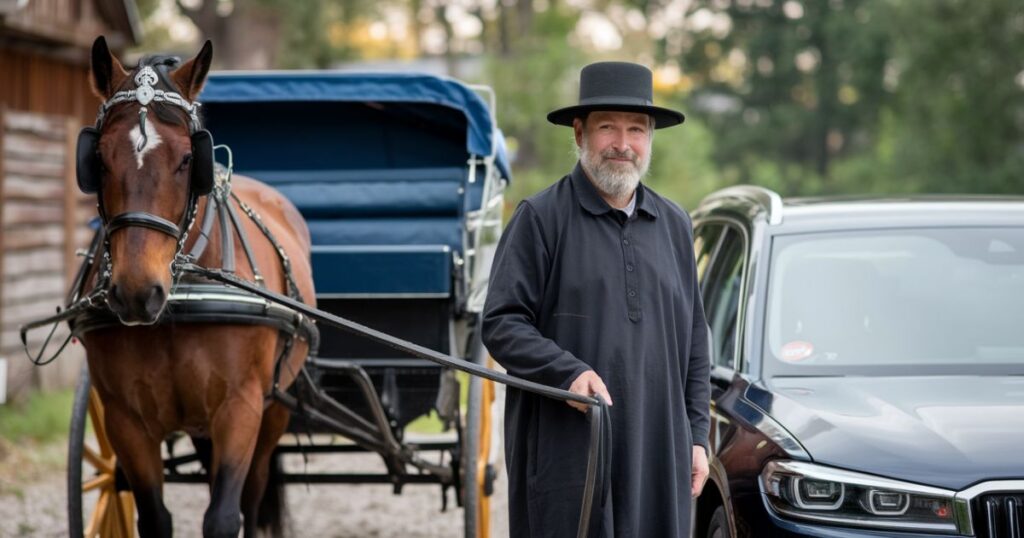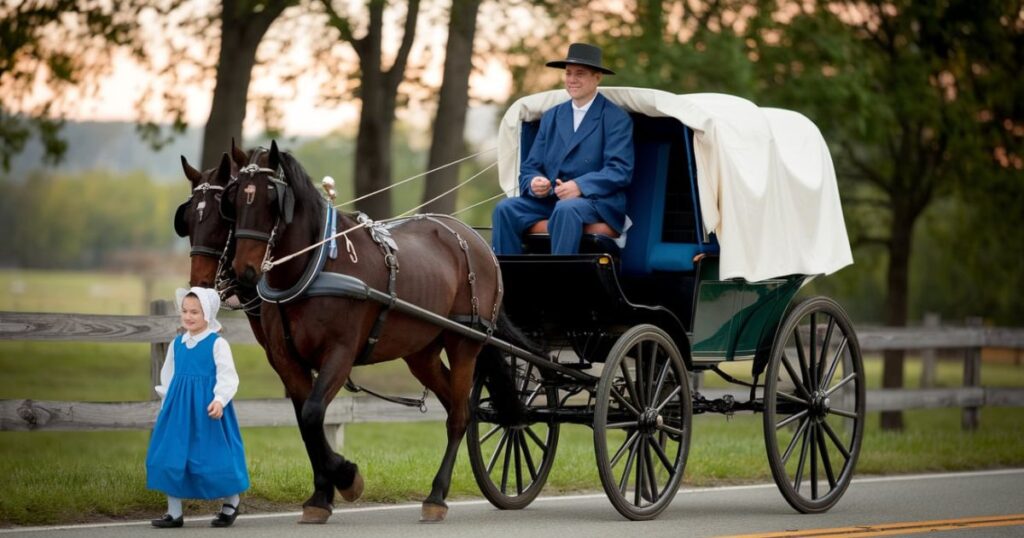Understanding the Amish Way of Life
The Amish community’s relationship with technology is deeply rooted in their religious beliefs and cultural values that date back to the 16th century.
Their approach to modern technology isn’t simply about rejection – it’s about making conscious choices that preserve their community values, faith, and way of life.
The Amish believe that the use of technology should be carefully evaluated based on whether it strengthens or weakens their community bonds and religious practices.
The Historical Foundation of Amish Technology Restrictions
The Amish tradition began in 1693 in Switzerland, led by Jakob Ammann. The movement emerged from the Anabaptist tradition, emphasizing simplicity, humility, and separation from the modern world.
These foundational principles continue to guide their decisions about technology use today. The historical context helps explain why certain technologies are accepted while others are rejected.
The Ordnung and Technology Guidelines
The Ordnung, the unwritten set of rules that guides Amish life, plays a crucial role in determining which technologies are acceptable.
Each Amish community has its own interpretation of the Ordnung, leading to varying levels of technology acceptance across different settlements.
This flexible approach allows communities to adapt while maintaining their core values.
Modern Technology vs. Amish Values

The Concept of Separation
The Amish practice of “gelassenheit” (submission to God’s will) influences their technology choices.
They believe that excessive reliance on modern technology can create pride and individualism, which contradicts their commitment to humility and community.
This principle guides their selective approach to adopting new technologies.
Community Impact Assessment
When evaluating new technologies, Amish communities consider several key factors: Will it bring the community closer together or drive them apart? Does it promote self-reliance or dependency on the outside world?
Will it preserve or diminish their traditional skills and craftsmanship? These considerations help maintain their cultural identity while adapting to necessary changes.
Read This Post: What Is The Role Of Technology In Operations?
Accepted Technologies in Amish Communities
Agricultural Equipment
Many Amish communities use horse-drawn machinery modified to comply with their beliefs.
Some communities permit tractors for stationary work but not for field work.
These adaptations allow them to maintain productive farms while adhering to their principles.
Transportation Methods
The iconic horse and buggy represents more than just transportation – it symbolizes their commitment to maintaining a pace of life that promotes community interaction and limited travel distances. However, some communities allow hired drivers for necessary longer-distance travel.
Communication Tools
While most Amish reject personal phone ownership, many communities have established community phone booths for essential communication.
Some businesses may use landline phones, fax machines, or even limited computer access for specific commercial purposes.
The Role of Electricity in Amish Life

Alternative Power Sources
Many Amish communities utilize alternative energy sources such as:
- Solar panels for basic lighting
- Hydraulic and pneumatic power for workshop tools
- Diesel generators for specific business needs
- Battery-operated devices for essential functions
Selective Use of Power
The Amish distinguish between different types of power usage. They often accept battery-powered devices while rejecting grid electricity, as the latter creates a constant connection to the outside world that could disrupt community life.
Business and Technology
Adapting to Modern Commerce
Amish businesses have found creative ways to compete in the modern marketplace while maintaining their values.
Some workshops use sophisticated tools powered by alternative energy sources, and certain businesses employ non-Amish neighbors to handle technology-related tasks.
Maintaining Traditional Skills
The limited use of technology helps preserve traditional craftmanship and skills passed down through generations.
This approach has actually become a marketable advantage, as many consumers value hand-crafted Amish goods.
Education and Technology Restrictions
Amish Schools and Learning
Amish children attend one-room schoolhouses until the eighth grade, focusing on practical knowledge and skills rather than technological literacy.
This educational approach emphasizes community values, practical skills, and religious instruction over technological proficiency.
Vocational Training
Young Amish receive hands-on training in traditional trades and skills, ensuring the continuation of their community’s self-sufficiency and economic stability.
Medical Technology and Healthcare
Balancing Traditional and Modern Medicine
The Amish approach to healthcare demonstrates their practical approach to technology. While they generally prefer natural and traditional remedies, most communities accept modern medical treatment when necessary for serious conditions.
Healthcare Decisions
Community support systems help manage healthcare costs, and decisions about medical technology use are often made collectively, considering both practical needs and religious values.
Environmental Impact and Sustainability
Unintended Benefits
The Amish lifestyle, while not explicitly environmentally focused, often results in a significantly lower carbon footprint compared to modern society. Their limited use of technology naturally promotes sustainable practices.
Traditional Farming Methods
Organic farming practices and traditional agricultural methods help preserve soil health and biodiversity, demonstrating how their technology restrictions often align with environmental conservation.
Challenges and Adaptations
Modern World Integration
As the world becomes increasingly digital, Amish communities face new challenges in maintaining their way of life while conducting necessary business and social interactions with the outside world.
Future Considerations
Communities continuously evaluate new technologies and adapt their rules to maintain their cultural identity while addressing practical needs in a changing world.
Misconceptions About Amish Technology Use

Common Myths
Many outsiders misunderstand the Amish approach to technology as complete rejection, when in reality, it’s about selective use based on community values and needs.
Practical Adaptations
The Amish demonstrate remarkable creativity in adapting technologies to meet their needs while preserving their core values and community structure.
Conclusion
The Amish approach to technology offers valuable insights into the relationship between technology, community, and values.
Their selective adoption of technologies demonstrates that it’s possible to maintain strong community bonds and traditional values while adapting to necessary changes in the modern world.
Their example challenges us to think more critically about our own technology use and its impact on community and social connections.
The Amish rejection of certain technologies isn’t about living in the past; it’s about making conscious choices that preserve their way of life for future generations.
Their approach reminds us that technology should serve community needs rather than reshape community values.
As our world becomes increasingly technology-dependent, the Amish example offers important lessons about balancing progress with preservation of human connections and cultural values.
Vividcrest admin brings expert insights in Tech and Gaming, offering up-to-date content, in-depth analysis, and trends to keep you ahead in the digital world.








